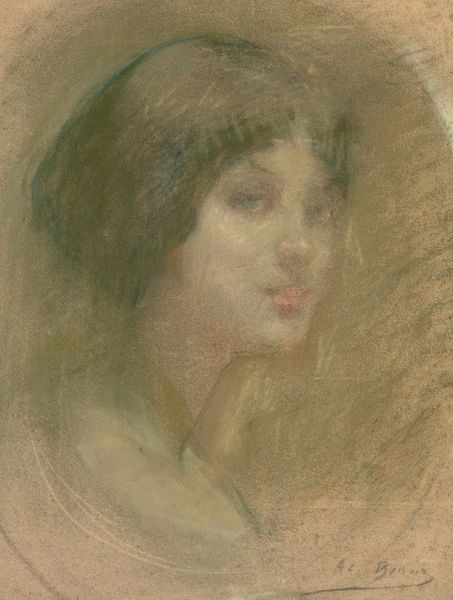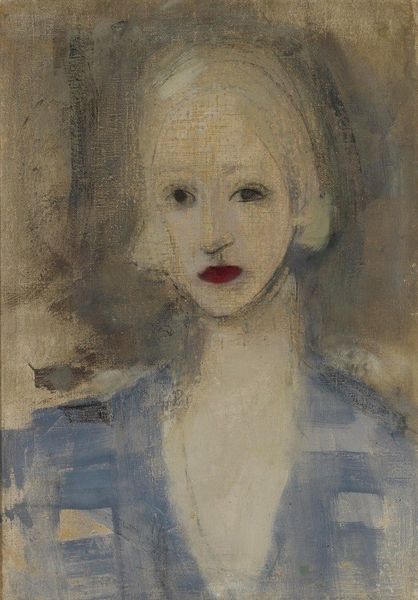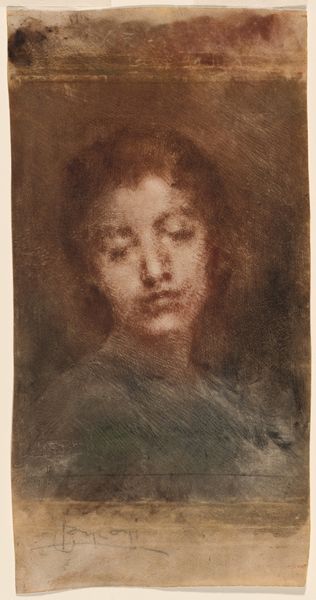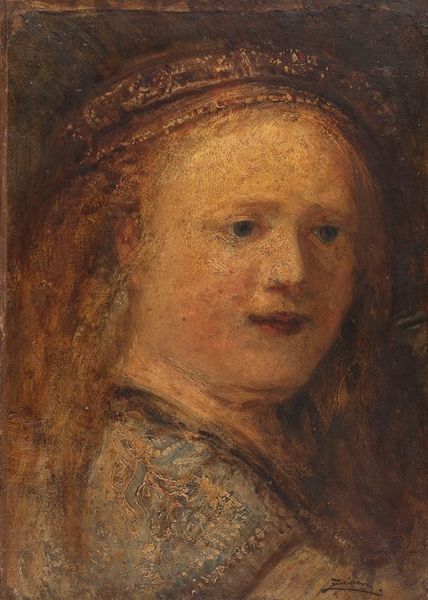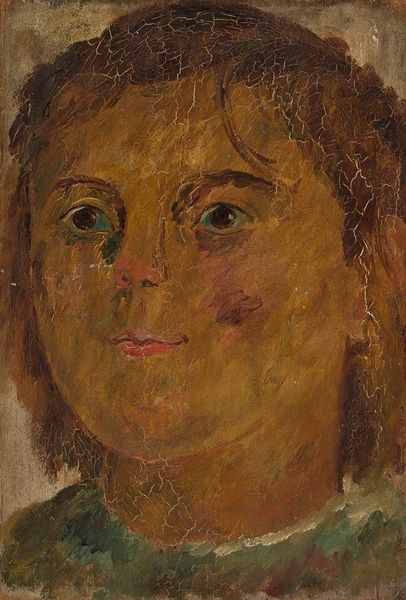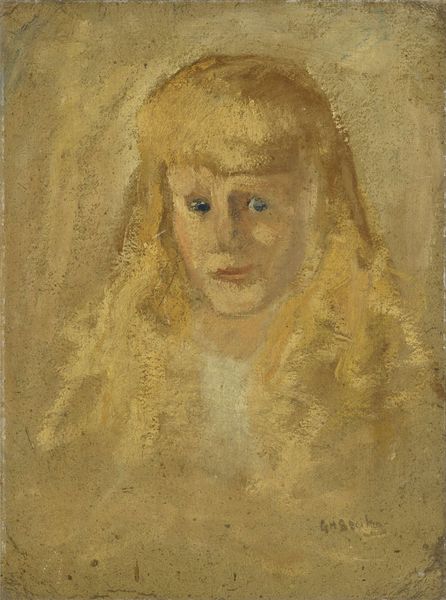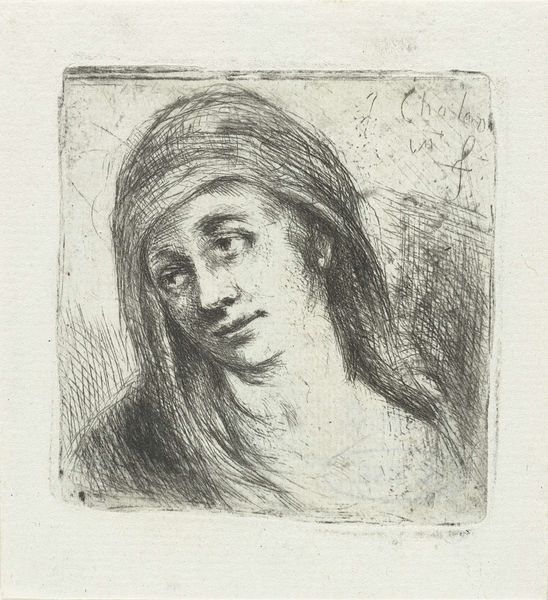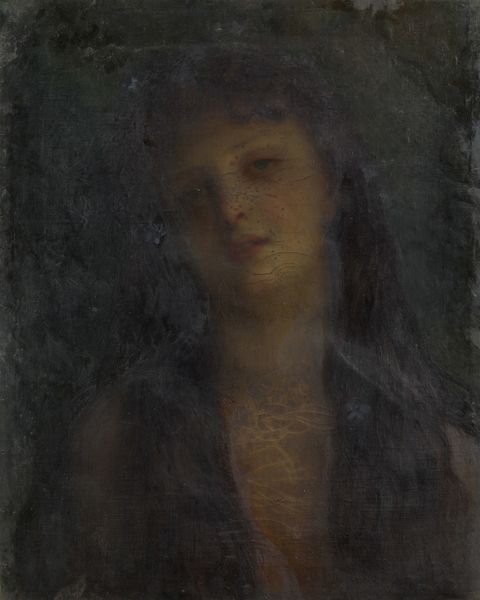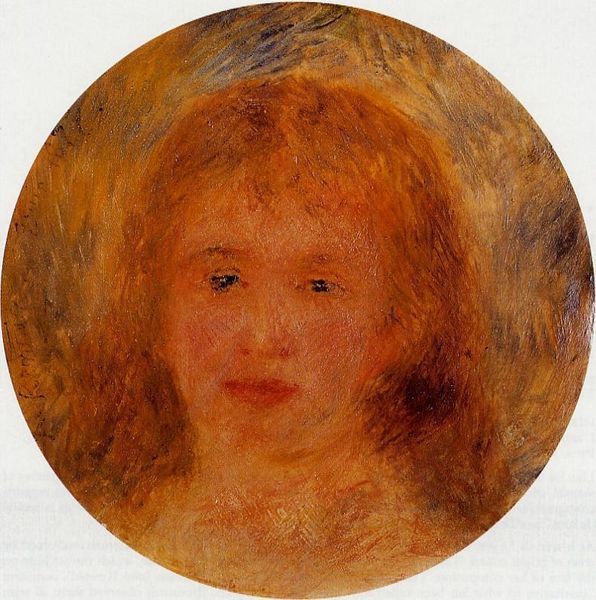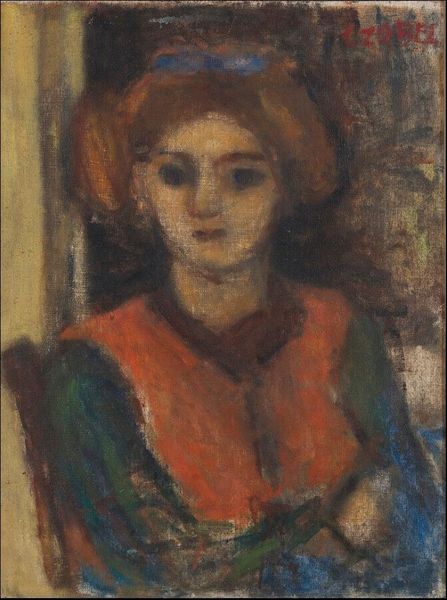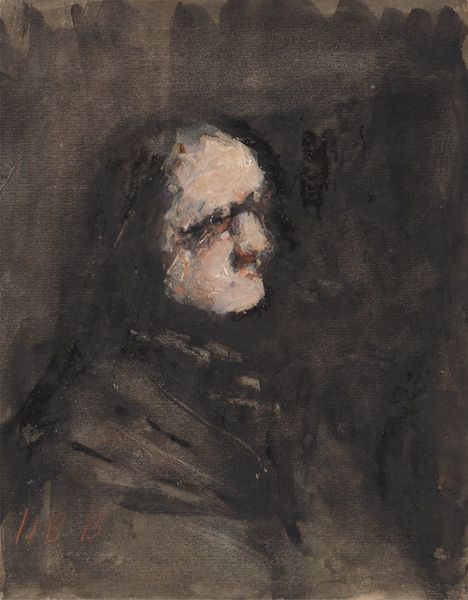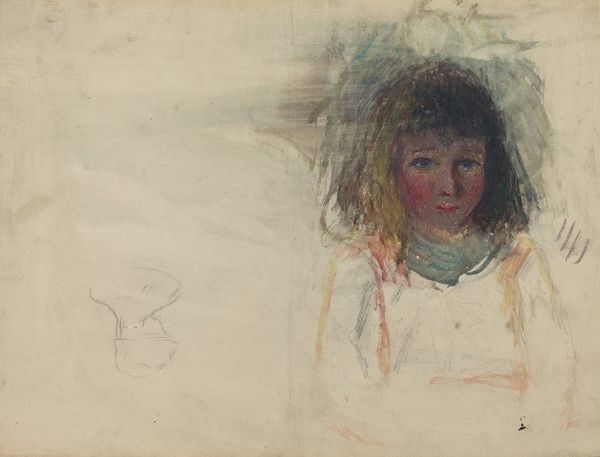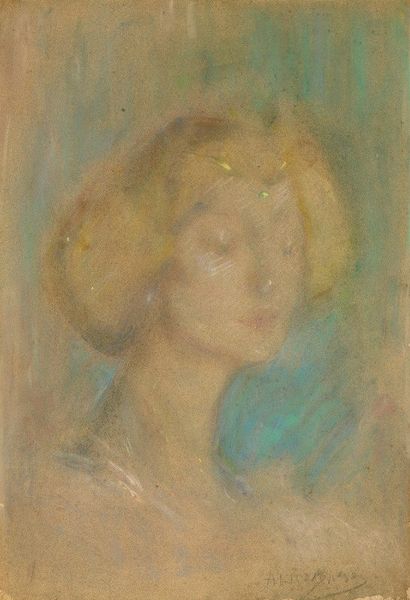
Copyright: Public Domain: Artvee
Editor: We're looking at Renoir's "Tête de fillette" from 1917, rendered in oil paint. The portrait is petite. I'm immediately struck by how the forms seem to dissolve into each other; everything feels soft and hazy. How would you describe its composition? Curator: Indeed. Observe the layering of color: soft pinks and blues creating luminosity. Note how Renoir uses color to define the girl’s features, eschewing sharp lines for gentle gradations. The way the paint is applied - loosely, with visible brushstrokes - speaks volumes. Editor: I see what you mean about the brushstrokes. There’s almost a vibration within the paint itself. The lack of distinct outlines really challenges traditional portraiture. Do you find that the indistinctness affects your reading of the artwork? Curator: Precisely! Focus on the relation of figure to ground: the background isn't merely a backdrop but an active component. Notice how it blends and merges with the figure. Renoir emphasizes color relationships over linear precision. Observe how the modulation of light and shadow models form but also serves to unify the entire picture plane. Editor: So, rather than seeking an accurate likeness, Renoir seems more interested in the interplay of color and form to capture something more elusive. It's less about the subject and more about the process? Curator: Exactly. This work compels us to contemplate not the “what” – the identity of the girl – but the “how” – the artistic methods by which vision itself is translated into paint on canvas. It becomes a study in pure visuality, celebrating the sensual properties inherent in oil paint. Editor: It's interesting to see it this way! Looking closely at those gradations, I’m realizing how carefully constructed those dissolving forms really are. Thank you! Curator: Indeed, engaging in such meticulous observation heightens one's capacity for artistic analysis, I appreciate your time.
Comments
No comments
Be the first to comment and join the conversation on the ultimate creative platform.
